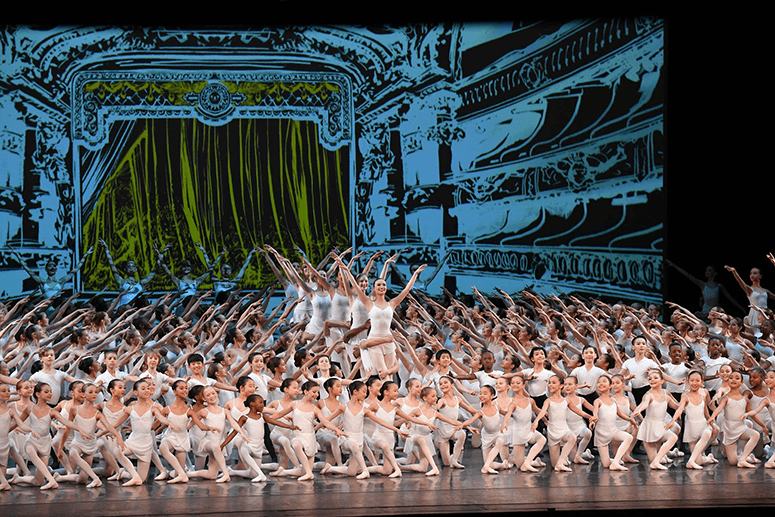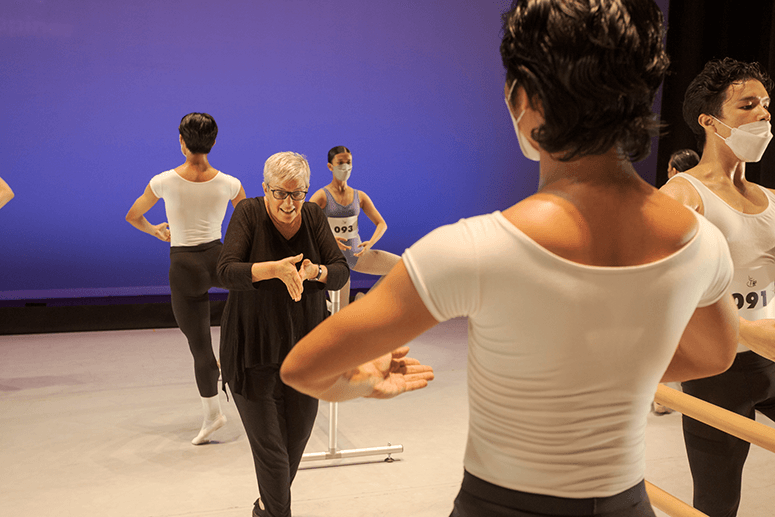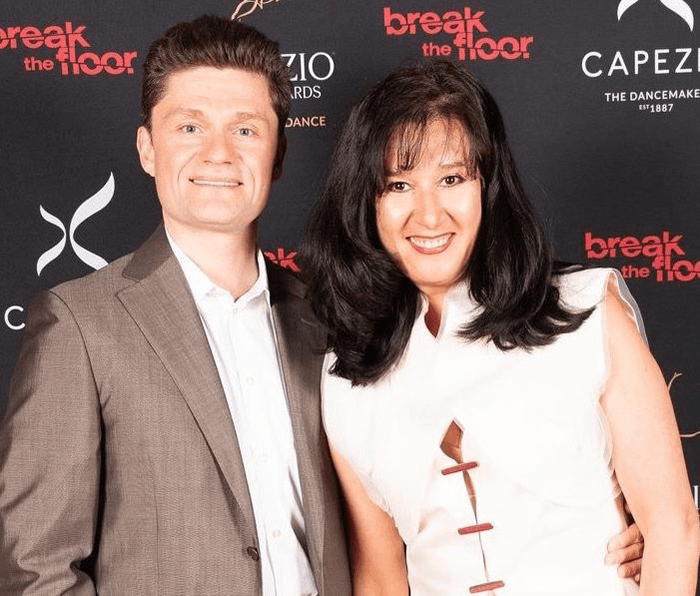How a ballet competition opens a world of opportunities
Danier Laganzo, a CENTEX scholar in Tondo when he was a child, never imagined he would be carrying the Philippine flag to the finals of the Youth America Grand Prix (YAGP) ballet Competition in Tampa, Florida earlier this year. He was happy playing his banduria at the school rondalla and singing with the choir. It was only upon the order of his “terror” teacher who threatened that no one could go home without joining the audition being conducted by STEPS Dance Studio that he even discovered his aptitude for yet another art form.
Sofia Zobel-Elizalde, founder and director of STEPS, saw the potential early on. “Ever since, ine-encourage ako ni Teacher Sofia,” Danier shared in a conversation. Although he was religiously attending classes, it was only upon joining a dance competition that he truly took it seriously as a profession: “Turning point nung nag-compete ako sa Asian Grand Prix 2019. I was 15 years old, first time to compete and iba talaga ang experience.” Winning the silver medal in Manila, he went to Hong Kong for the finals.
Although Danier did not place in HK, he got something even better when Garry Trinder, president of the jury, noticed him and offered him a two-year scholarship at the New Zealand School of Dance where he is the director. This was the best that could happen since the pandemic hit and most dancers were stuck at home. “He was the only one walking to school to dance every day because New Zealand was the only country running,” Sofia related as she also recounted how her school had to shut down.

“Marami akong natutunan, nagflamenco kami aside from ballet and contemporary dance,” says Danier who was singled out in a review by Deirdre Tarrant of theatreview.org for his “standout performance” in Shaun James Kelly’s Nexus performed during the graduation show. Brigitte Knight of danz.org also noted “a stylish and impressive solo” by Danier in Reset Run by Tabitha Dombrowski.
His lucky streak continued upon his return to Manila where YAGP was holding its first ever competition in South East Asia in 2022 with 100 participants from the Philippines as well as Singapore and Malaysia. Danier was awarded the Grand Prix award given to one receiving the highest score both in classical and contemporary. He was also offered three scholarships but decided to accept the one from Stuttgart Ballet because it had a job fair component. Together with six other Philippine participants, he represented the country in the world finals in Tampa. Sponsored by Globe Telecom, the STEPS scholar proudly waved the Philippine flag among the other 1,600 dancers from all over the world, making it all the way to the final round to become the first Philippine dance student to do so.

It was quite a feat as YAGP is the most prominent ballet competition with the largest global network of dance and the biggest platform for dance education. It started in 1999 when the founder, Larissa Saveliev, a former Bolshoi ballet dancer, was pursuing her teaching career in the US. “I wanted to compare my teaching techniques and the results achieved by my students with the students from other schools and other teachers,” shared Larissa by email. She was looking for a ballet festival like those she attended in Russia as a student, but since none existed in America, she created one together with her husband, Gennadi Saveliev, a soloist then at the American Ballet Theater (ABT), “to give teachers across the country a forum to exchange experiences.” They also wanted to provide exposure for talented students. “Before YouTube, the fastest way for a dancer to be discovered were ballet competitions but the two competitions then were only for adults and professionals, and only took place every 3-4 years.”
Exposure became the main idea, conducting semi-final rounds across the country, inviting the most promising students to perform at the finals where the directors of the leading ballet institutions would be invited to award scholarships to their schools as the main prizes. The first year proved that such a forum was crucial, leading to its international status by the second year with scholarships awarded by the Royal Ballet School in the UK, quickly followed by many other dance institutions. Over 450 YAGP alumni are now dancing with 80 companies around the world including James Whiteside and Isabella Boylston of ABT whom we got to see for their CENTEX benefit show, Cesar Corrales of Royal Ballet and Sara Ann Mearns of NYC Ballet, among others. Each year, over 12,000 dancers participate in more than 28 US cities and eight international locations which now includes the Philippines where it had its first edition last year.

his solo for the classical category
Larissa related that they “have been discussing bringing the YAGP experience to the Philippines for some time as we believe the area is a wonderful source of talent, and having been partners with Stella Abrera on many projects over the years and with her being an ambassador for the arts in the Philippines made this a truly exciting endeavor to provide opportunities to young Filipino dancers.”
Stella Abrera, the first Filipino to become principal dancer at ABT and now director of its affiliate school, the ABT Jaqueline Kennedy Onassis School, serves as the international ambassador and chair of YGP Philippines. She shares how she is “a very happy connector – it brings me great joy to see the two worlds finally joining forces! There’s a wonderful musicality and an innate sense of artistry in Filipino dancers and they deserve to gain the same exposure. Providing them more performance opportunities is a major bonus.”

Instrumental in connecting STEPS scholars Elwince Magbitang and Vince Pelegrin with the ABT JKO school which eventually landed them appointments at the dance company, Stella and her husband, Sacha Radetsky, director of the ABT Studio Company, were already discussing with Sofia the possibility of YAGP launching here during their visits to Manila for the ABT benefit shows for CENTEX. Sofia showed them the Samsung Performing Arts Theater which was under construction in 2019.
Win or lose you should keep on going because at the end of the day isa lang siyang growing process. Hindi yun ang endpoint ng career ng dancers. It helps boost our career but it is not our career.
It was the perfect venue. “Our theater is really primed for dance with its state-of-the-art facilities and the only space locally with Harlequin floors, not to mention that it’s the crown jewel of the bourgeoning arts and culture district of Makati,” according to Christopher Mohnani, theater director.
The first YGP Philippines launched last year with three days of competitions and masterclasses from Canada’s National Ballet School, Australian Ballet and Stuttgart Ballet. “With the success of last year’s edition we are doing the second one this year from Sept. 29 to Oct. 1, just in time for World Ballet Day,” says Christopher.

This year is particularly exciting because the founders themselves, Larissa and Gennadi, are coming “which is huge, stressing how the Philippine competition is important for them.
Secondly, they are expanding categories. Last year, it was only solos but now they’re opening up to pas de deux and ensembles which they found to be of great interest for Filipino dancers in both classical and contemporary. Globe Telecom is presenting the competition again as part of the Globe for Good campaign “supporting the aspirations of young dancers in a bid to continually raise the profile of our world-class artists,” says chief marketing officer Pia Gonzalez-Colby.

The benefits of joining competitions cannot be stressed enough by Sofia: “Those really serious about their ballet should compete because it will open their eyes to the schools, to the intensives, and bring them to an international level since they see other kids as well as master teachers from the great dance companies of the world.”
You don’t even have to win to get the full benefits. “Instead of focusing on placement or prizes, focus on the real value of participating: exposure and the process,” shares Larissa.
“The competitions do not define you,” adds Danier. “Win or lose you should keep on going because at the end of the day isa lang siyang growing process. Hindi yun ang endpoint ng career ng dancers. It helps boost our career but it is not our career.”
She concludes: “It’s really about dancers coming together, performing, and being inspired by other dancers. And you never know who’s watching, in person or live stream. Also, judges always notice talent—and they talk to each other. If they see you as a dancer to watch, they will tell other school directors about you and will follow you, often without you even realizing that.”



